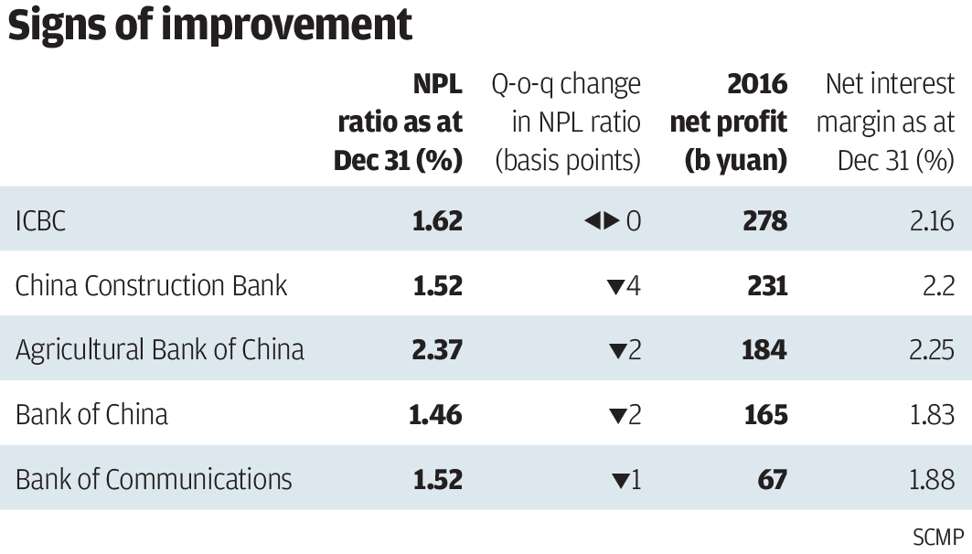
New | Chinese banks’ Q4 bad debt ratios improve on economy and swaps
More transparency needed before this filters through into pricing, say analysts
China’s five largest banks reported better-than-expected figures for their bad debt when they announced their full year financial results last week, helped by improved macroeconomic conditions and more aggressive attempts to clean up their balance sheets.
Non-performing loan ratios declined at the China Construction Bank, Agricultural Bank of China, Bank of China, and Bank of Communications during the fourth quarter of 2016, while the ratio at the Industrial & Commercial Bank of China remained broadly unchanged.
“Banks have been making use more forcefully of a wider range of instruments to deal with their bad loans in this credit cycle,” said Bernhard Kotanko, Managing Partner Asia Pacific for consultancy Oliver Wyman. “These have included securitisation and debt-for-equity swaps, among others.”
Construction Bank’s debt-for-equity swaps will exceed 300 billion yuan (US$43.6 billion) by the end of the first quarter of 2017, the bank’s president Wang Zuji said at a press briefing.
Agricultural Bank’s president Zhao Huan said that his bank’s programme so far was worth 70 billion yuan from eight deals, and that there were 20 more swaps to come.
“All of the banks are trying to manage and offload their NPLs to improve their asset quality, but there remains a concern about transparency,” said Kotanko. “One challenge for Chinese banks is how to increase the confidence in asset quality figures that they are reporting.”

There are still concerns about whether debt swaps truly transferred risks away from the banks, as well as in the value of the NPL figures as an indicator of asset risk.
Fitch Ratings said it doesn’t think “banks’ NPL ratios reflected the true underlying credit conditions,” the rating agency’s senior director Grace Wu said last week in an interview with the Post.
What’s more, there is still scope for the NPL figures to rise further even on the current methodology.
“China’s NPL ratio probably didn’t peak at 1.7 per cent [the average across the financial sector at the end of 2016], especially given that China is speeding up the disposal of zombie companies in 2017,which may lead to the unwinding of zombie loans and subsequent recognition of relevant NPLs on banks’ loan books,” said Nomura’s banking analyst Sophie Jiang.
Jiang linked the better figures to improvements in the “real economy” and industrial profitability.
China’s producer price index improved in the latter half of last year, while its manufacturing purchasing manager’s index has been above 50 since last August.
“At present, Chinese banks are valued with lower multiples than many international competitors which is partly due to business mix and concerns about underlying asset quality transparency,” Kotanko said. “If there were more transparency, we might get a pleasant surprise relative to some of the very bearish concerns.”

